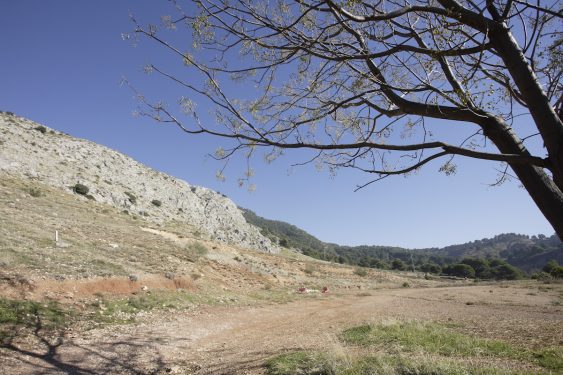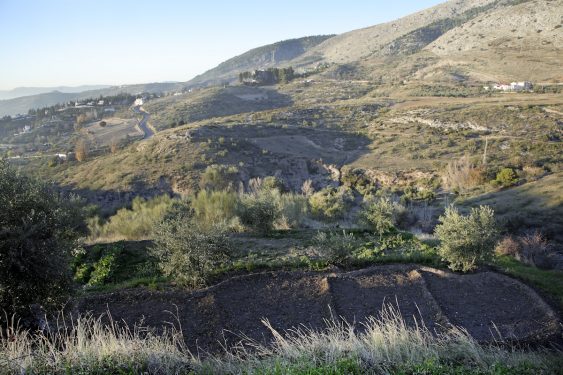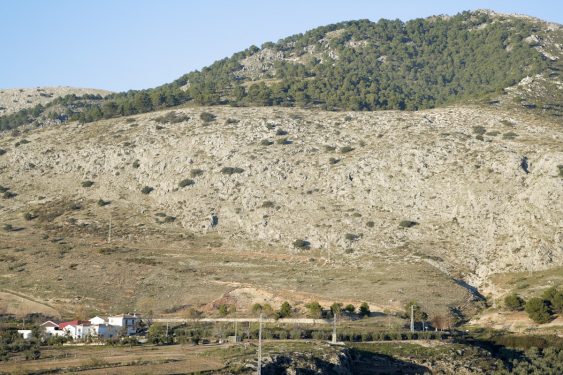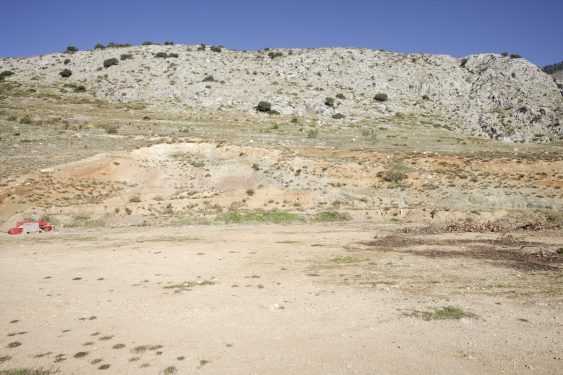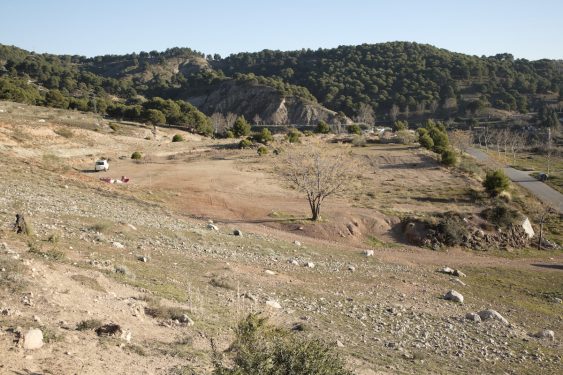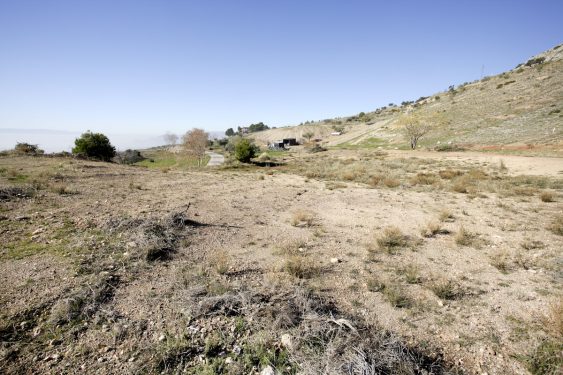Open place where, according to several investigators, Federico and his platoon mates were executed and buried in the early morning of August 17 or 18, 1936.
A few hundred meters past the García Lorca Park, to the left and towards Víznar, opposite the Pepino farm, the only existing construction on that side of the road, are Los Llanos de Corbera (the place of instruction of the troops of the sector of Víznar at the beginning of the uprising of 1936) and, above them, the Peñón del Colorado (Colorado Hill), which have identified the area.
Various testimonies coincide in exonerating the Falange and placing on the CEDA (Confederación Autónomas de Derechas Españolas, the party of Ramón Ruiz Alonso, the person who arrested Federico) the responsibility for the shooting of García Lorca.
There, in an unspecified place, and according to several researchers and witnesses, García Lorca and his comrades in the platoon were executed and buried Federico in the early morning of August 17 or 18, 1936. The theory of Llanos de Corbera has been supported in two books by two prominent people linked directly or through family to the rebel side and, specifically, to the party of Primo de Rivera: the Falange journalist Eduardo Molina Fajardo (director of the newspaper Patria of Granada, attached to the so-called Press of the Movement and author of The Last Days of García Lorca, of 1973) and the general José María Nestares, a member of Falange since 1935, through the “memoirs” written by his son, the also military Fernando Nestares García-Trevijano.
There is another link between both theories: the alleged Memoirs of General Nestares, written by his son decades after his father’s death, were transcribed by Federico Molina Fajardo, son of the Falange journalist mentioned. Both testimonies coincide in exonerating the Falange and in casting upon the CEDA (Confederación Autónomas de Derechas Españolas, the party of Ramón Ruiz Alonso, the person who arrested Federico) the responsibility for the shooting of García Lorca.
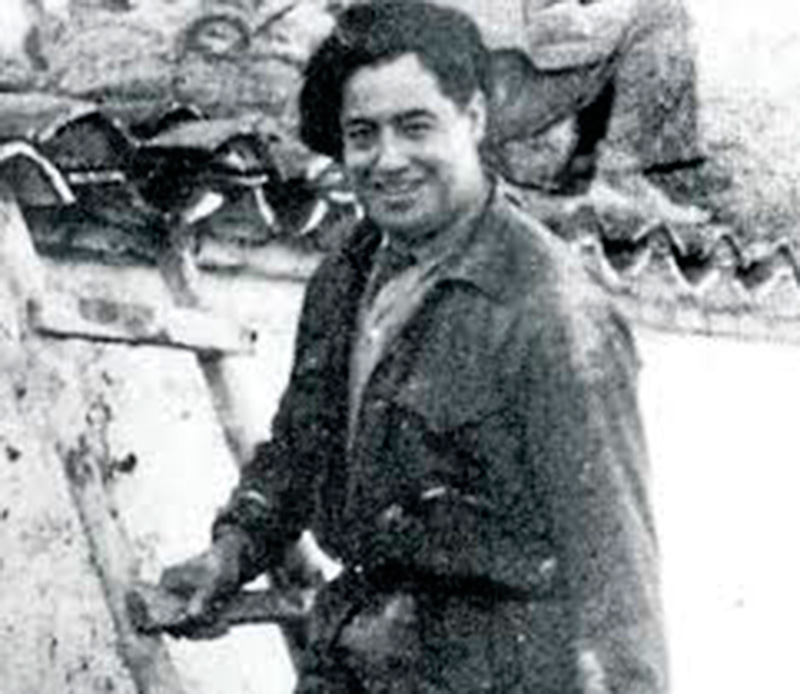
The theory exposed by both was also broadly assumed by the researcher Miguel Caballero, promoter of the last two searches for Lorca’s body in the area of the Peñón del Colorado and the Llanos de Corbera with unsuccessful results in 2014 and 2016 and author of The Last Thirteen Hours of García Lorca.
In the images included in the book of the “memoirs” of General José María Nestares, the sentimental and political value that the Llanos de Corbera had during the first months of the war, especially for the Falangists, is underlined through numerous photographs. At the beginning of the war, the General of the Southern Army Gonzalo Queipo de Llano, Mercedes Sanz Bachiller, delegate of Social Aid, Pilar Primo de Rivera or the head of the Falange in Andalusia Sancho Dávila, among others, passed through the training camp.
According to the various testimonies gathered in both books, Lorca arrived at Viznar “with his own firing squad”, which gives rise to the subsequent affirmation of a certain Pedro Cuesta, mayor of Pulianas and collaborator of Nestares: “No, there was no Falangist there. There were the assault guards and those strange men who arrived, who were said to be from the CEDA and who formed the picket line (…). The same ones who took him away”. Nestares told his son that Lorca was shot on August 18 because that day “he left Víznar very early to carry out an operation in the Cerro de los Pollos, and walking along the Víznar-Alfacar road, and close to the training camp, almost in front of the farmhouse El Pepino, he had the opportunity to see how the burials were being carried out”.
Miguel Caballero, on the other hand, insists on the theory of Molina Fajardo and the Nestares. Caballero, in order to write his book The Last Thirteen Hours of García Lorca, sifted through numerous testimonies and only gave credence to the following: “They are those of José María Nestares himself, captain of the first Falange flag in the area; his own son, Fernando Nestares, who took Molina Fajardo to the site of the grave; Joaquín Espigares Díaz, farmer of Víznar and Falange centuria chief under Nestares’ orders; that of the Falangist mayor of Pulianas, Pedro Cuesta Hernández, who guarded the detention center of La Colonia, where Lorca spent his last hours before being taken to be shot”, and that of a Freemason identified by Molina Fajardo as A. M. de F., who was detained there and gave a very detailed version of everything that happened. These five people, he alleges, lived in different places, did not know each other at all and their statements, which were taken at different times, coincide. In the firing squad there were no Falangist elements. It was composed, according to Caballero, “by the following nine guards: Ajenjo Moreno, Benavides Benavides, Salvador Baro Leyva, El Salvaorillo; Jiménez Cascales, selected for his reputation as an ‘accurate marksman’; Fernando Correa Carrasco, Hernández Martín, Rodríguez García and Hernández Jiménez.”
Neither does Caballero believe that Lorca was shot exclusively for political reasons or because of his homosexuality. He rather supports as a cause family quarrels and disputes over the lands of Fuente Vaqueros and Valderrubio, as exposed in his book The Truth about the Murder of García Lorca.
According to Caballero’s theory, the bodies were buried in ancient water wells in the military training area. The two excavations backed by him, in 2014 and 2016, yielded no results.
The first unsuccessful search for the body of Federico García Lorca in the Llanos de Corbera was carried out in November 2014 at the proposal of the association Regreso con Honor following the indications of Miguel Caballero who, three years earlier, had published The Last Thirteen Hours of García Lorca, and under the scientific direction of the archaeologist Javier Navarro of the University of Zaragoza. The excavation, like the previous one in 2009, was paid for by the Junta de Andalucía.
During the first phase of excavation, which lasted ten days, the shovel removed the soil in the same place where they tried to build a soccer field, but when it reached the pits where graves would allegedly be found, nothing appeared. “The successive interventions on the land, the soccer field and a motocross circuit, have previously removed much of it. The wells are those that the witnesses pointed out, the rest of the white road also, but they are not there”, admitted Miguel Caballero.
The second attempt to locate the bodies by the team of Miguel Caballero and archaeologist Javier Navarro was undertaken in 2016 with a similar result.
In this phase, which began in September and ended a month later, 1,347 square meters of surface were removed and 4,620 cubic meters of earth were extracted. The only evidence found was a fragment of the armor of a Mauser shell and a Mosin-Nagant casing which, although they could be compatible with the weapons and projectiles used in the Civil War, were not used to shoot Lorca.
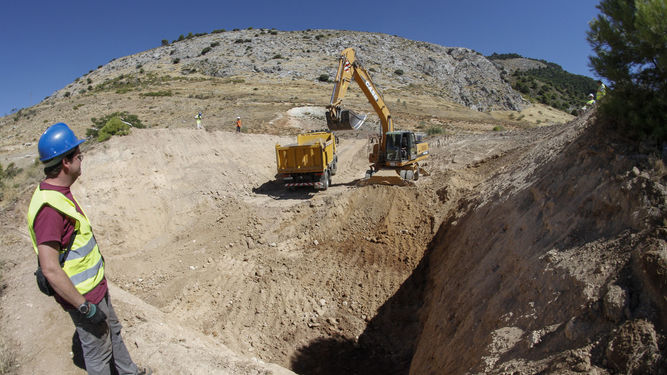
The intervention, which cost 17,000 euros, was financed by a patron of Eibar, José Ignacio Olave, a friend of Caballero. Although he found no human remains, Caballero proclaimed that he had found the graves although the bodies had been exhumed after burial.
The failed attempt in 2008 to build a soccer field in Alfacar one kilometer from the Viznar Ravine, where thousands of people were killed, only served to remove tons of earth and stones and alter forever a large tongue of land bordering with Víznar.
The Environmental Agency of the Andalusian Regional Government provided the land; the Alfacar Town Council promoted the intervention; the Ministries of Public Works and the Environment supported the work and, finally, the Social Welfare Department of the Provincial Council financed a third of the operation.
Alfacar was then playing in the first regional league.
The intervention of Isabel García Lorca, who personally wrote to the president of the Regional Government and the archbishop of Granada demanding the end of the work, managed to stop the nonsense, although the area never regained its original appearance.
Prado mortal de lunas
[Mortal field of moons]
y sangre bajo tierra.
[and subterranean blood.]
Prado de sangre vieja.
[Field of ancient blood.]
Luz de ayer y mañana.
[Past and future light.]
Cielo mortal de hierba.
[Mortal sky of grass.]
Luz y noche de arena.
[Light and night of sand.]
Me encontré con la muerte.
[I came face to face with death.]
Prado mortal de tierra.
[Mortal field of land.]
Una muerte pequeña.
[A little death.]
El perro en el tejado,
[The doy on the roof.]
Sola mi mano izquierda
[Only my left hand]
atraversaba montes sin fin
[crossed the unending]
de flores secas.
[slopes of dry flowers.]
Catedral de ceniza.
[Cathedral of ash.]
Luz y noche de arena.
[Light and night of sand.]
Una muerte pequeña.
[A little death.]
Una muerte y, yo un hombre.
[A death and the man I am.]
Un hombre solo, y ella
[A man alone with her,]
una muerte pequeña.
[a little death.]
Prado mortal de luna .
[Mortal field of moons.]
La nieve gime y tiembla
[The snow moans and trembles]
por detrás de la puerta.
[on the other side of the door.]
Un hombre.¿y qué? Lo dicho.
[A man. So what? That’s all.]
Un hombre solo y ella.
[A man alone with her.]
Prado,amor,luz y arena.
[Field, love, light, and sand.]
- Miguel Caballero. The thirteen last hours in the life of García Lorca. La Esfera de los Libros. Madrid, 2011.
- Alejandro V. García. “Controversial construction of a soccer field near Garcia Lorca’s grave”. El País, 8 October 1998.
- Ian Gibson. From New York to Fuente Granada. Grijalbo. Barcelona, 1987.
- Gabriel Pozo. Lorca, the last walk. Ultramarina. Granada, 2009
- Federico Molina Fajardo. García Lorca and Víznar. Memoirs of General Nestares. Ultramarina. Granada, 2012.
- Jesús Ruiz Mantilla. “Last search for Lorca ends without results”. El País, 22 October 2016.
- Lorca´s location
- Peñón del Colorado
- current location
- Peñón del Colorado
- ADDRESS
- Carretera de Víznar a Alfacar (GR-3101)
- DETAILS OF THE VISIT
Public space of free access.
HOW TO GET THERE BY BUS
